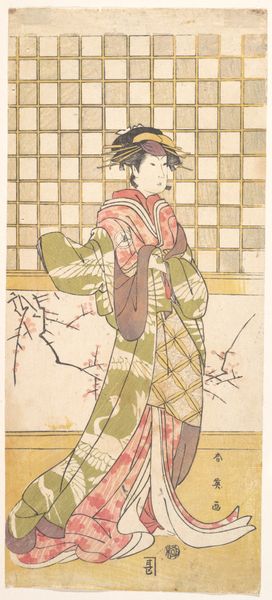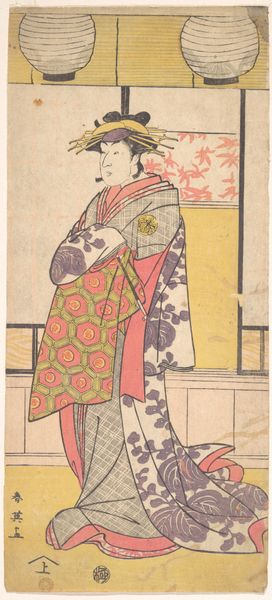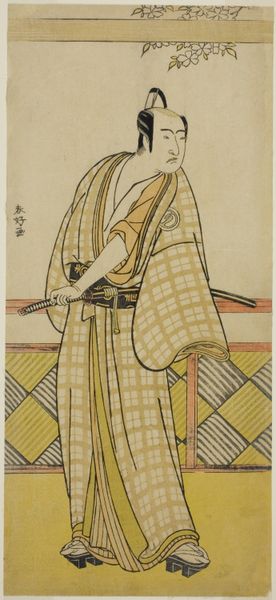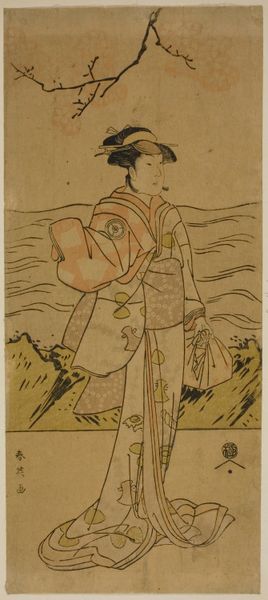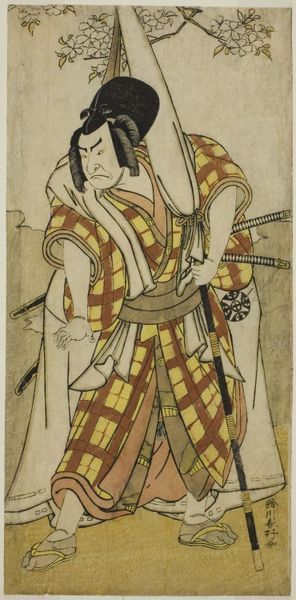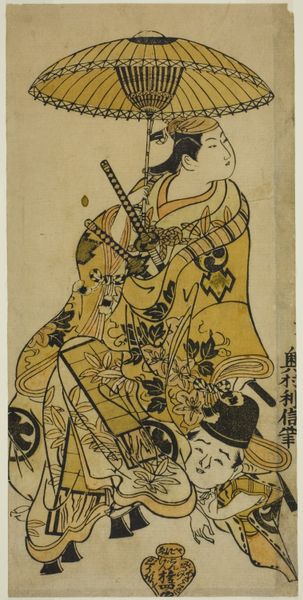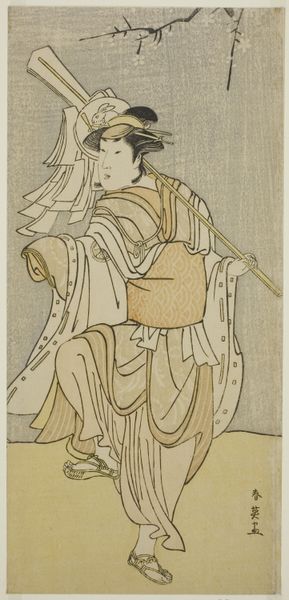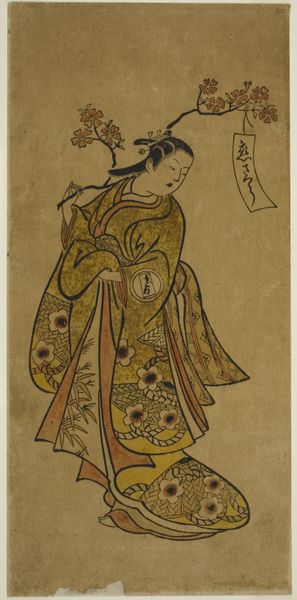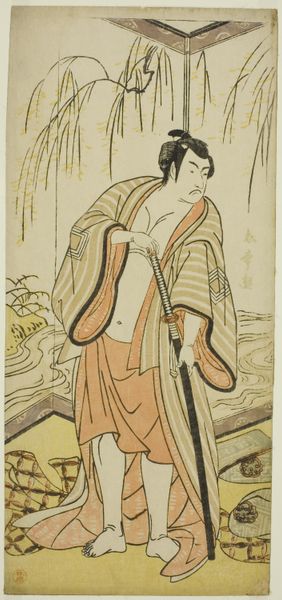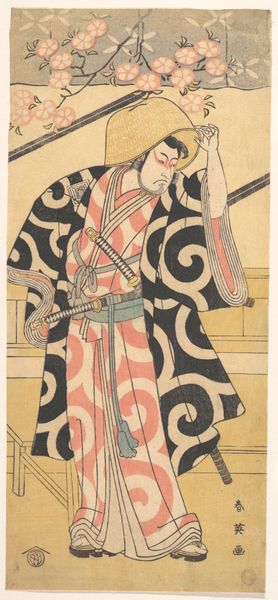
The Actor Iwai Hanshiro IV as Soga no Goro Tokimune in the Play Koi no Yosuga Kanegaki Soga, Performed at the Ichimura Theater in the First Month, 1789 c. 1789
0:00
0:00
print, woodblock-print
#
portrait
#
ink drawing
# print
#
asian-art
#
ukiyo-e
#
woodblock-print
Dimensions: 30 × 13.8 cm (11 13/16 × 5 7/16 in.)
Copyright: Public Domain
Curator: Before us, we have a woodblock print from around 1789, conceived by Katsukawa Shun'ei. Its full title is rather descriptive: "The Actor Iwai Hanshiro IV as Soga no Goro Tokimune in the Play Koi no Yosuga Kanegaki Soga, Performed at the Ichimura Theater in the First Month, 1789." Editor: Even without the lengthy title, the figure exudes theatricality. The almost geometric patterns of his garments and the backdrop create an intriguing flatness, a deliberate artificiality. The coloring is quite subtle, leaning into a narrow range of creams. Curator: That flatness is characteristic of Ukiyo-e prints, of course, and serves to highlight the dynamic line work, the artist's rendering of form through carefully weighted strokes. Think about the cultural context; Ukiyo-e prints weren't just art objects. They were mass-produced and acted as celebrity endorsements and visual advertising for Kabuki theatre, feeding directly into popular culture. Editor: Right. Note how the patterning works, not as an illusion of depth, but as symbolic markers—visual shorthand to inform the audience about rank, lineage, or even emotional state. Also, if you notice the plum blossom, a symbol of renewal and spring that points to the new theatrical year for the Ichimura Theater, but in contrast, the color seems muted. Curator: And the artist, Shun'ei, belonged to the Katsukawa school, so it makes sense that we see such intense focus on the individual actor, whose identity was a crucial element for the intended audience, considering that these prints advertised specific plays, as we mentioned before. There is, also, an implied reference to Japanese mythology in that pose; the sword handle almost calls your attention immediately. Editor: So the visual experience of the print for a contemporary audience was inextricably linked with a whole network of social, economic, and theatrical meanings that shaped that experience and gave its resonance and import, one that a formal analysis, however thorough, would leave obscure. Fascinating. Curator: Indeed, a great reminder of the complexities within even the seemingly simplest of art objects. Thank you. Editor: My pleasure; until next time.
Comments
No comments
Be the first to comment and join the conversation on the ultimate creative platform.
